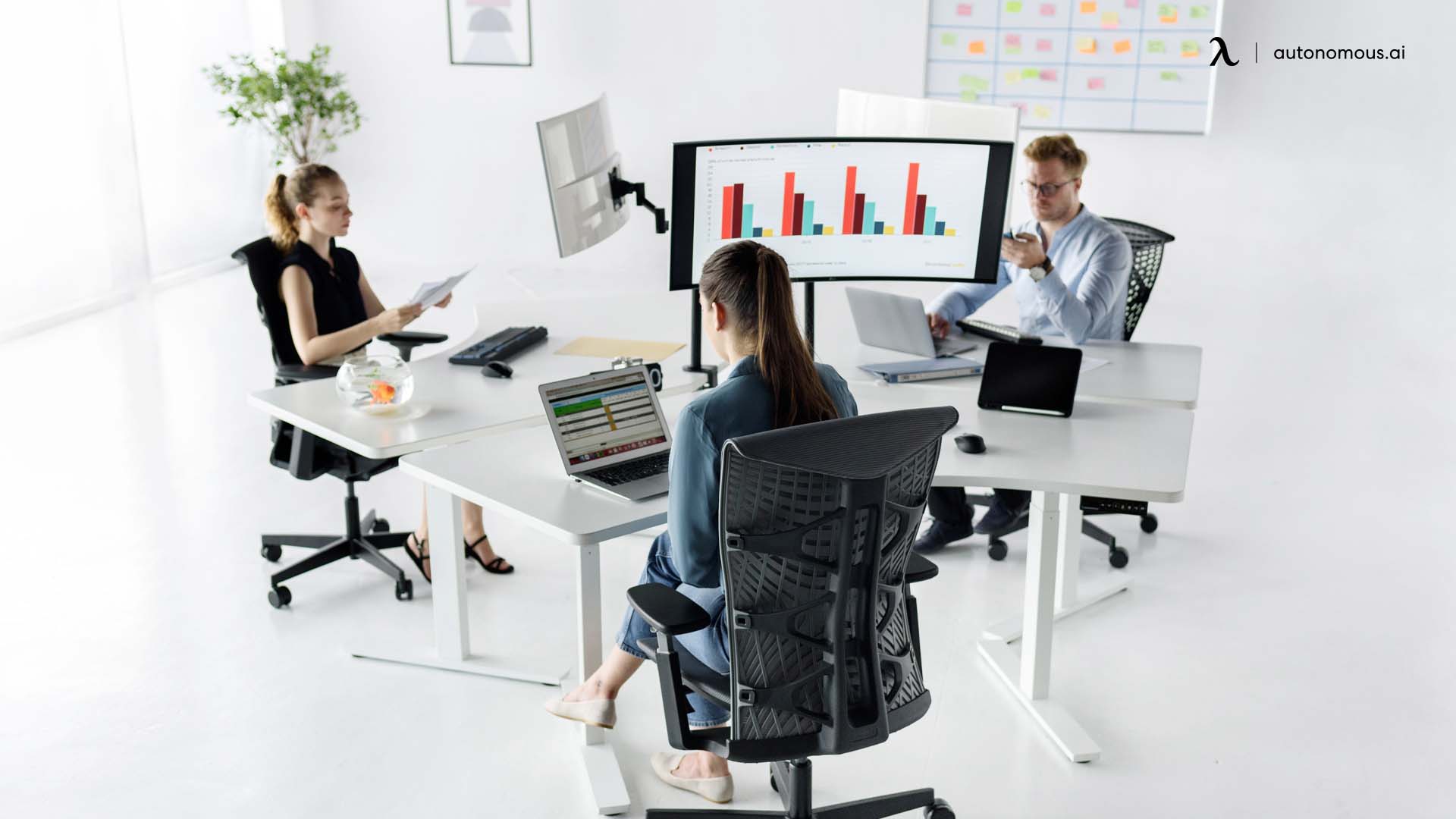/https://storage.googleapis.com/s3-autonomous-upgrade-3/static/upload/images/new_post/how-to-conduct-ergonomic-evaluation-3126-1634817380207.jpg)
How to Conduct Ergonomic Evaluation for Your Workplace?
Ergonomics is necessary these days, from the most common office worker to a home office worker. Employees using a non-ergonomic work environment could be at risk of falling unwell much more frequently. As employees fall sick, the overall productivity of your organization may be affected adversely.
You need to be offering the best office design for your employees. Conducting periodic ergonomic evaluations and keeping records of office accidents and injuries is not only a mandatory legal need. It also helps you find out critical areas and topics that may need a reassessment.
Let’s deep dive into it some more.
What is an Ergonomic Evaluation?

An ergonomic evaluation is conducted to assist a company in assessing the office environment and its risks. It is primarily aimed at studying factors that may cause an accident(s) at work. Minor things like the angle of a lever being operated could be the potential cause. Such accidents may cause MSD or Musculoskeletal disorders and or injuries for your employees. You are responsible for providing a safe environment for your employees. Repetitive movement at operating specific machinery, use of particular furniture may cost you millions if not tracked and rectified.
An ergonomic evaluation provides a well-rounded perspective of the risks studied. These include an employee's capabilities, physical and mental demands of the role/task, tools and equipment deployed to perform the task/job, and the overall work environment.
The risk evaluation procedure is aimed to help you correct such risks. How? Once the risks are identified, you can plan to have a healthier and safer work environment.
How Much Time is Needed to Conduct an Ergonomic Evaluation?
Several factors decide the time it could take to conduct an ergonomic assessment. This does not necessitate you to shut down your offices temporarily also. . As work continues, you could cover sections of your office for an ergonomic assessment.
Primarily, the size of your office and the areas to be covered decide the duration needed. The complex process in those areas, the type of machinery, the frequency of usage of such machinery and more, decide the time it will take. This will need to be customized and doesn't have a definite timeline.
How to Conduct an Ergonomic Evaluation?

An initial walk-through tour of the establishment or office in question is helpful. Why? This would help you see the overall picture and prepare you for any cross-dependencies between teams/ departments.
Now that you are decided, here are the most basic steps for a workplace ergonomic assessment.
Step 1: Establish Evaluation Methods and Tools

It is important to establish common techniques and tools for an ergonomic evaluation. Work areas being evaluated may need different procedures and tools at times, including ergonomic assessment checklists. This may depend upon the usage of the area, machinery deployed, people operating in this area, and the outcome desired from processes in those areas.
Standardization of evaluation methods and tools results in a quality outcome.
Even if the risk assessors are trained and have experience, ensure you have a joint briefing. This develops a common understanding between all working team members. This will ensure standardized processes and SOPs to be followed, including documentation.
You may find it useful to study a few ergonomic evaluation checklists provided by OSHA, USA, before starting.
Step 2: Working Team – Employees and Assessors

Not all employees have been trained to perform all machines. Some specialists have been identified and trained. It's best to involve such employees while conducting an evaluation. Why? More than SOPs, you will notice the actual performance. This will lead you to a clearer on-ground reality of things.
At work, some employees may be taking shortcuts or have invented their own way of doing things. Since these specialists have been running the show at work, taking their ideas and understanding of what they are doing and why would certainly help you identify any ergonomic issues in the workplace.
Speaking to their supervisors would also help you get a perspective.
Similarly, from a workplace perspective, even the assessors identified have been trained to critical assessments. Choose your team wisely.
Step 3: Ergonomic Evaluation Tools

As you engage in an ergonomic evaluation, don't miss the number of helpful tools. Listed here are some of the workplace ergonomic evaluations that are commonly used.
1. The WISHA Lifting Calculator
2. Hand-Arm Vibration: HAV Calculator
3. WISHA Caution Zone Checklist
4. Pushing/pulling: Snook Tables
5. WISHA Hazard Zone Checklist
6. Rapid Upper Limb Assessment (RULA)
7. Rapid Entire Body Assessment (REBA)
Acquaint yourself and all assessors with these tools and their limitations.
Step 4: Data Synthesis and Evaluation
What is the data telling you? What are the headlines that are emerging? Are there specific containment zones or a particular type of machinery that has seen a high number of risks? As you make sense of data, don't forget to run a what-if analysis to generate ideas.
You may need a deep dive or an alteration to your original plan at times. Be ready to share this with the sponsors and make amends to the workplace ergonomic assessment to test deeper.
Step 5: Action Plans

As you present data to sponsors and stakeholders, present facts, not assumptions. Allow the team to grasp the details, walking them through some issues/concerns and what your team saw. Be prepared for a different viewpoint and explanations of what is happening the way it is happening. Your role is to bring out potential risks and prioritize them. For offices employing knowledge workers, you may find risks associated with employee health due to a standing desk or an office chair.
Sponsors of the ergonomic evaluation will need to appoint teams to take action. Actions need to be practical and cover the risk associated with them. You will find many things debatable by employees who have been working at those processes for many years. You must rank risks in order of their priority in terms of high, medium, or low risks. Other methods could include the impact of the risk as high, medium, or low. Many times low risks can become fatal with the use of special office equipment. For example, a seat belt is fixed in an automobile manufacturing unit, a critical process to measure. In the event of failure of the right processes, it could lead to the death of a passenger using such a car.
Be prepared for follow-ups and reviewing the risks that have been covered.
Wrap-up
Ergonomic evaluation is an internal risk assessment process. As you launch one, you will need to have a view from the ground. Be prepared to make your notes and test your assumptions by asking the right questions. In the end, an ergonomic evaluation is supposed to protect the employee, the company, and its users.
Subscribe for a 10% discount on your first order.
Sign up for our weekly update and be the first to know about our specials & promotions.
Verbreiten Sie es weiter

/https://storage.googleapis.com/s3-autonomous-upgrade-3/production/ecm/240409/smartdesk-one-apr-2024-offer-1920x540-CTA.jpg)
/https://storage.googleapis.com/s3-autonomous-upgrade-3/production/ecm/240409/smartdesk-one-apr-2024-offer-720x1200-CTA.jpg)
/https://storage.googleapis.com/s3-autonomous-upgrade-3/production/ecm/240415/bulk-order-apr-2024-offer-720x1200-CTA-min.jpg)
/https://storage.googleapis.com/s3-autonomous-upgrade-3/production/ecm/240415/pod-offer-apr-2024-720x1200-CTA.jpg)
/https://storage.googleapis.com/s3-autonomous-upgrade-3/static/upload/images/new_post_author/admin-1.png)